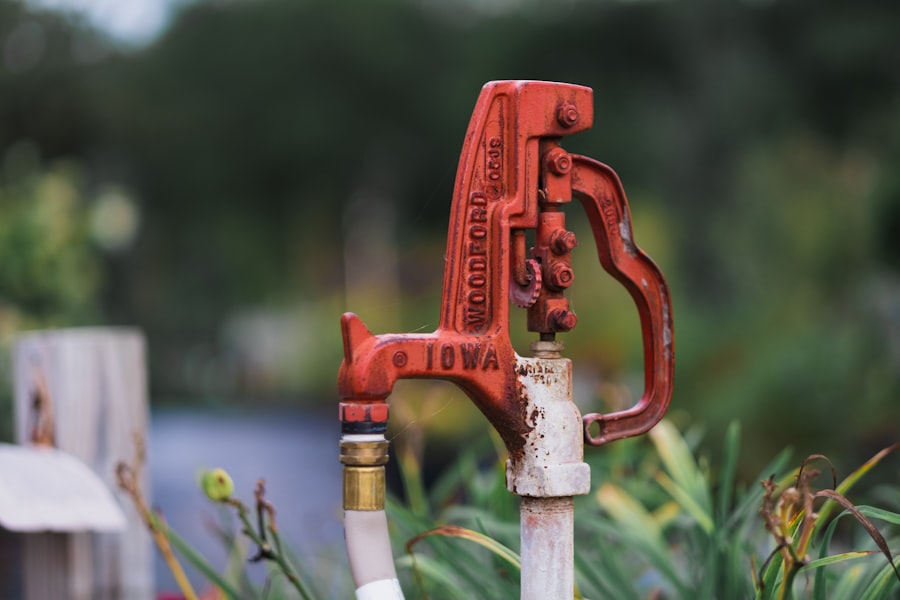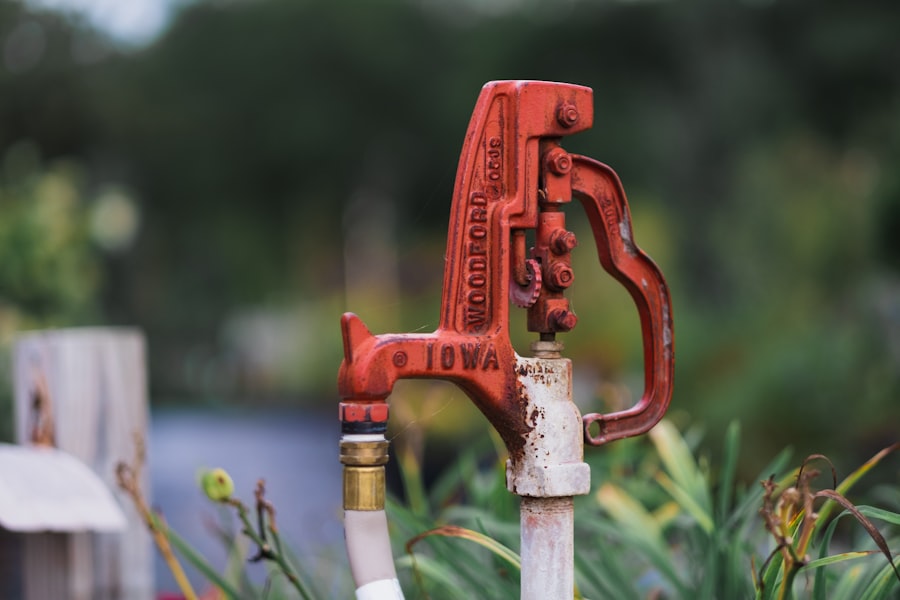Pay-per-click (PPC) advertising has emerged as a vital tool for plumbing businesses seeking to enhance their online visibility and attract new customers. Unlike traditional advertising methods, PPC allows businesses to display ads on search engines and social media platforms, paying only when a user clicks on their ad. This model is particularly advantageous for plumbing companies, as it enables them to target specific demographics and geographic areas, ensuring that their marketing efforts reach potential customers actively seeking plumbing services.
The immediacy of PPC campaigns can lead to quick results, making it an appealing option for businesses looking to generate leads in a competitive market. The plumbing industry is characterized by a high demand for services, often driven by emergencies or urgent needs. This urgency creates a unique opportunity for PPC advertising, as potential customers are likely to search for solutions online when faced with plumbing issues.
By leveraging PPC, plumbing businesses can position themselves at the top of search engine results pages (SERPs), increasing the likelihood of attracting clicks from users in need of immediate assistance. Furthermore, PPC campaigns can be tailored to reflect seasonal trends or local events, allowing plumbing companies to capitalize on specific opportunities that may arise throughout the year.
Key Takeaways
- PPC advertising can effectively increase visibility and leads for plumbing businesses.
- Selecting relevant keywords is crucial to attract the right customers in your PPC campaigns.
- Crafting clear and compelling ad copy helps improve click-through rates and engagement.
- Targeting the appropriate audience ensures your ads reach potential plumbing clients.
- Continuous optimization and performance tracking are key to maximizing PPC campaign success and scaling your business.
Setting Up a Successful PPC Campaign for Your Plumbing Business
Establishing a successful PPC campaign begins with a clear understanding of your business goals and target audience. For plumbing businesses, this often means focusing on generating leads for emergency services, routine maintenance, or specialized plumbing solutions. Before launching a campaign, it is essential to define key performance indicators (KPIs) that will help measure success, such as click-through rates (CTR), conversion rates, and return on ad spend (ROAS).
By setting these benchmarks upfront, plumbing businesses can better assess the effectiveness of their campaigns and make informed adjustments as needed. Once goals are established, the next step is to choose the right platform for your PPC campaign. Google Ads is the most widely used platform for PPC advertising, offering extensive reach and robust targeting options.
However, other platforms like Bing Ads or social media channels such as Facebook and Instagram can also be effective, depending on your target audience. Each platform has its unique features and audience demographics, so it’s crucial to select the one that aligns best with your business objectives. Additionally, creating a dedicated landing page for your PPC ads can significantly enhance user experience and improve conversion rates by providing visitors with relevant information tailored to their needs.
Choosing the Right Keywords for Your Plumbing PPC Campaign

Keyword selection is a critical component of any successful PPC campaign, particularly in the plumbing industry where competition can be fierce. The right keywords will not only drive traffic to your ads but also ensure that you attract users who are genuinely interested in your services. Start by conducting thorough keyword research using tools like Google Keyword Planner or SEMrush to identify high-volume search terms related to plumbing services.
Focus on both broad and long-tail keywords; while broad keywords like “plumbing services” may attract a larger audience, long-tail keywords such as “emergency plumber in [your city]” can yield higher conversion rates due to their specificity. In addition to identifying relevant keywords, it’s essential to consider negative keywords—terms that you want to exclude from your campaigns. For instance, if your plumbing business does not offer certain services like “drain cleaning,” adding “drain cleaning” as a negative keyword will prevent your ads from appearing in searches related to that service.
This strategy helps refine your audience further and ensures that your budget is spent effectively on clicks that are more likely to convert into paying customers.
Creating Compelling Ad Copy for Your Plumbing PPC Campaign
| Metric | Description | Recommended Value/Range | Importance for Ad Copy |
|---|---|---|---|
| Click-Through Rate (CTR) | Percentage of users who click on the ad after seeing it | 3% – 10% | Indicates how compelling and relevant the ad copy is to the audience |
| Quality Score | Google’s rating of the quality and relevance of your keywords and PPC ads | 7 – 10 (out of 10) | Higher scores reduce cost per click and improve ad placement |
| Conversion Rate | Percentage of clicks that result in a desired action (e.g., call, form fill) | 5% – 15% | Measures effectiveness of ad copy in driving customer actions |
| Ad Relevance | How closely the ad copy matches the user’s search intent | High (score 8-10) | Improves Quality Score and user engagement |
| Use of Call-to-Action (CTA) | Inclusion of clear action phrases like “Call Now” or “Get a Free Quote” | Present in 100% of ads | Encourages immediate user response and increases conversions |
| Ad Extensions Usage | Inclusion of additional information like location, phone number, or site links | Used in 90%+ of ads | Enhances ad visibility and provides more user options |
| Character Count | Length of headline and description in ad copy | Headline: up to 30 characters; Description: up to 90 characters | Ensures ad copy fits platform limits and remains concise |
| Use of Keywords in Ad Copy | Incorporation of targeted plumbing-related keywords | Include primary keyword in headline and description | Improves ad relevance and Quality Score |
Crafting compelling ad copy is crucial for capturing the attention of potential customers in a crowded marketplace. Your ad copy should clearly communicate the value of your plumbing services while addressing the specific needs of your target audience. Start with a strong headline that includes your primary keyword and highlights a unique selling proposition (USP).
For example, an ad headline like “24/7 Emergency Plumbing Services – Fast Response!” immediately conveys urgency and availability, appealing to users in need of immediate assistance. In addition to an attention-grabbing headline, the body of your ad should provide concise yet informative details about your services. Incorporate calls-to-action (CTAs) that encourage users to take the next step, such as “Call Now for a Free Estimate!” or “Schedule Your Service Today!” Including special offers or promotions can also enhance the appeal of your ad copy.
For instance, mentioning a limited-time discount on first-time services can create a sense of urgency and motivate potential customers to act quickly.
Targeting the Right Audience for Your Plumbing PPC Campaign
Effective audience targeting is essential for maximizing the return on investment (ROI) of your PPC campaigns. Plumbing businesses should focus on geographic targeting to ensure that their ads reach potential customers within their service areas. Most PPC platforms allow advertisers to set specific locations where their ads will be displayed, enabling plumbing companies to concentrate their efforts on local markets where they can provide services.
This localized approach not only increases the likelihood of conversions but also helps build brand recognition within the community. Demographic targeting is another valuable strategy for plumbing businesses looking to refine their audience further. Consider factors such as age, gender, and household income when setting up your campaigns.
For example, if your plumbing services cater primarily to homeowners rather than renters, you may want to target demographics that align with homeownership trends in your area. Additionally, utilizing remarketing strategies can help re-engage users who have previously visited your website but did not convert, reminding them of your services and encouraging them to return.
Optimizing Your Plumbing PPC Campaign for Conversions

Once your PPC campaign is live, ongoing optimization is crucial for improving performance and maximizing conversions. Regularly monitor key metrics such as CTR, conversion rates, and cost per acquisition (CPA) to identify areas for improvement. A/B testing different ad variations can provide valuable insights into what resonates best with your audience.
For instance, experimenting with different headlines or CTAs can help determine which combinations yield the highest engagement and conversion rates. Another critical aspect of optimization is ensuring that your landing pages are aligned with your ad copy and provide a seamless user experience. A well-designed landing page should load quickly, be mobile-friendly, and contain clear information about your plumbing services.
Including customer testimonials or reviews can also enhance credibility and encourage potential customers to take action. Additionally, implementing conversion tracking tools will allow you to measure the effectiveness of specific ads and keywords in driving leads, enabling you to make data-driven decisions for future campaigns.
Tracking and Analyzing the Performance of Your Plumbing PPC Campaign
Tracking and analyzing the performance of your PPC campaign is essential for understanding its effectiveness and making informed adjustments over time. Utilize analytics tools such as Google Analytics in conjunction with your PPC platform to gain insights into user behavior after clicking on your ads. This data can reveal valuable information about which keywords are driving traffic, how users interact with your website, and where they may drop off in the conversion process.
Regularly reviewing performance reports will help you identify trends and patterns that can inform future strategies. For example, if certain keywords consistently lead to high conversion rates while others do not perform well, reallocating budget resources toward the more effective keywords can enhance overall campaign performance. Additionally, analyzing demographic data can provide insights into which segments of your audience are most likely to convert, allowing you to refine targeting strategies accordingly.
Scaling Your Plumbing Business with Successful PPC Advertising
As your plumbing business begins to see success from its PPC advertising efforts, scaling those campaigns effectively becomes paramount. One approach is to gradually increase your budget for high-performing campaigns while maintaining a close eye on ROI metrics. This strategy allows you to capitalize on successful ads without overspending or compromising profitability.
Additionally, consider expanding your service offerings or geographic reach based on demand trends observed through your PPC campaigns. Exploring new platforms or advertising formats can also contribute to scaling efforts. For instance, if you have primarily focused on Google Ads, experimenting with social media advertising or display ads may open new avenues for customer acquisition.
Furthermore, leveraging customer feedback and testimonials gathered through successful campaigns can enhance brand reputation and attract even more clients as you scale your operations. By continuously refining your strategies based on data-driven insights and market trends, you can ensure sustained growth for your plumbing business through effective PPC advertising.



